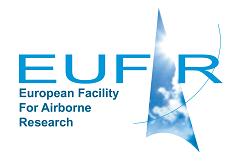Project

MASOMED: MApping SOil variability within rainfed MEDiterranean agroecosystems using hyperspectral data
Abstract
This EUFAR project was part of an overall research aimed at developing an integrated methodology using hyperspectral optical, thermal and lidar data combined with SAR single and full polarimetric data to map soil resources and land management activities. As a follow-on to the SEDMEDHY proposal that successfully acquired hyperspectral and lidar data in the dry season (summer 2011) and allowed to develop a methodology to map erosion stages (Schmid et al, 2016), the present study aims at mapping the soil variability during the growing season and associated vegetation stress indicators within the rainfed Mediterranean agroecosystems based on hyperspectral optical and thermal data.
For this, the following scientific issues were pursued:
1) determining soil variability throughout the study area using the full potential of visible, near infrared, and thermal infrared hyperspectral CASI 1500i and AHS data;
2) assessing the spatial distribution of
the different rainfed agroecosystems according to abiotic and biotic properties;
3) relating vegetation stress to soil degradation processes and conditions;
4) detect changes related to soil erosion of soil surface covers by comparing current conditions with those identified in previous work (Schmid et al., 2016), and developing a decision tree methodology to classify the soil and crop cover related to soil erosion processes at the pixel level;
5) assessing the variability of soil properties at different spatial scales with the aim of testing the transferability of the methods used to future hyperspectral space-borne sensors such as EnMAP,
HISUI, PRISMA, SHALOM;
6) integrating existing space-borne optical, thermal infrared and radar sensors such as Landsat 8, ASTER, Copernicus Sentinel 1 and 2 and linking to Radarsat2 data to enhance soil and vegetation cover information using time series.
The latter issue aimed to study the potential of combining multi-source data (optical, radar, thermal) to assess and spatially map soil quality and crop stress, and to test and develop a simplified methodology that can determine soil and vegetation cover properties associated to soil degradation processes based on current satellite sensors. Data from space-borne sensors at the time of the hyperspectral acquisition as well as data sets from other selected dates during the period of the crop cultivations were used. Field work obtained spectral data with field spectroradiometers and a thermal radiometer (multispectral CIMEL 312-2) as well as field measurements of soil and vegetation parameters and agricultural activities. An integrated methodology was implemented to incorporate the data obtained with the different sensors at the different spatial and spectral resolutions and compiling a database based on GIS technologies. Hyperspectral data obtained with the CASI 1500i and AHS sensors will be used to determine land cover and soil and vegetation characteristics associated to soil
Details
| Keywords: | EUFAR, MASOMED, soil |
|---|---|
| Previously used record identifiers: |
No related previous identifiers.
|
